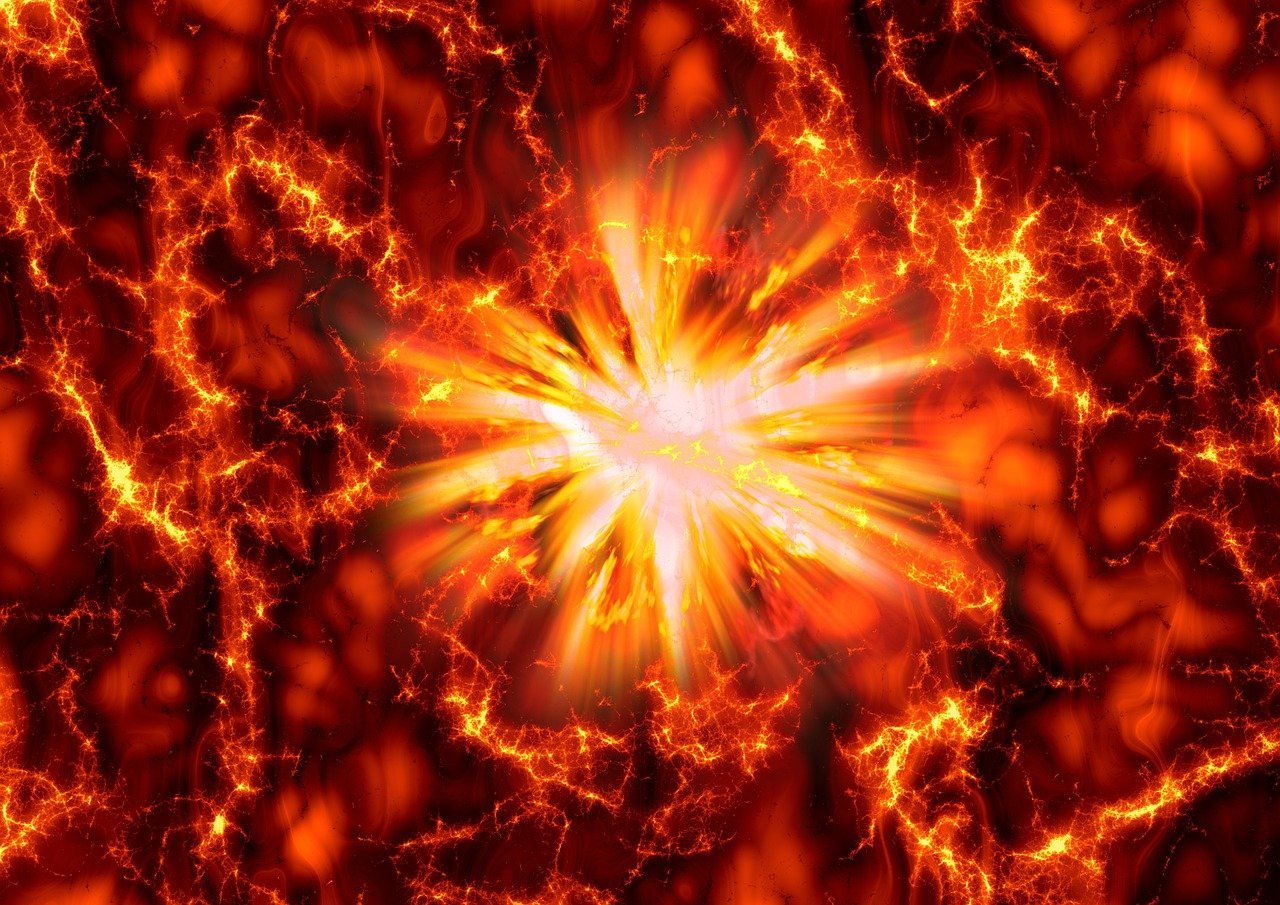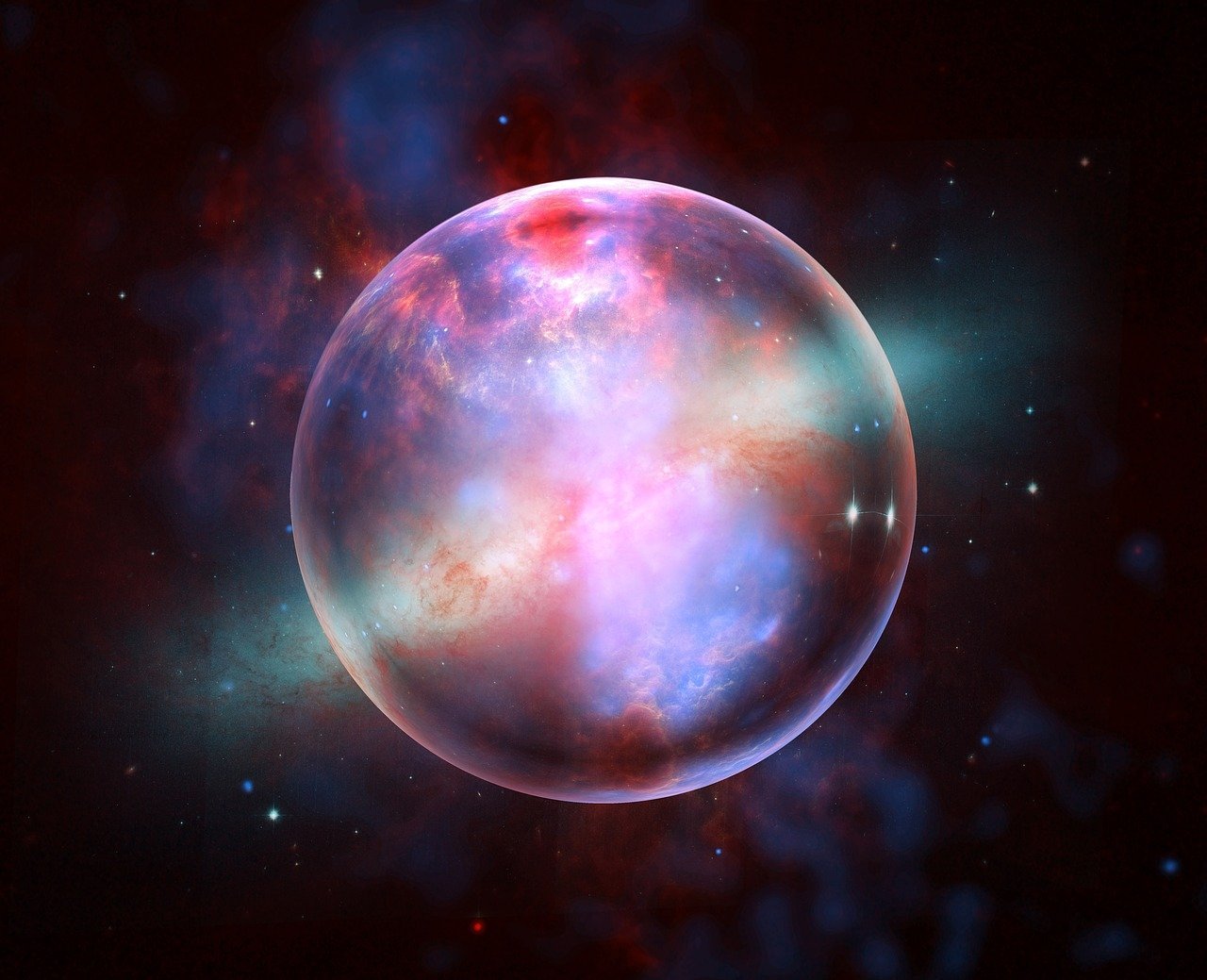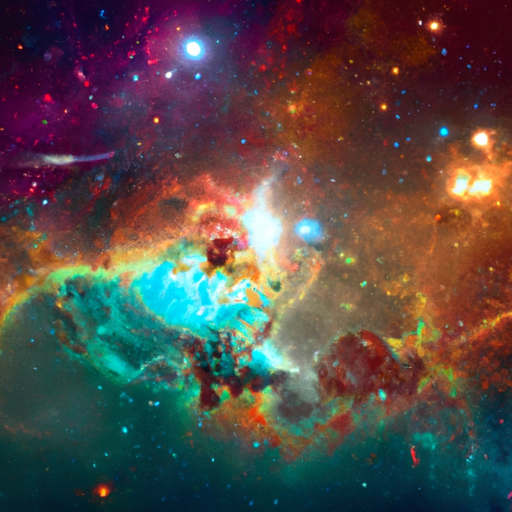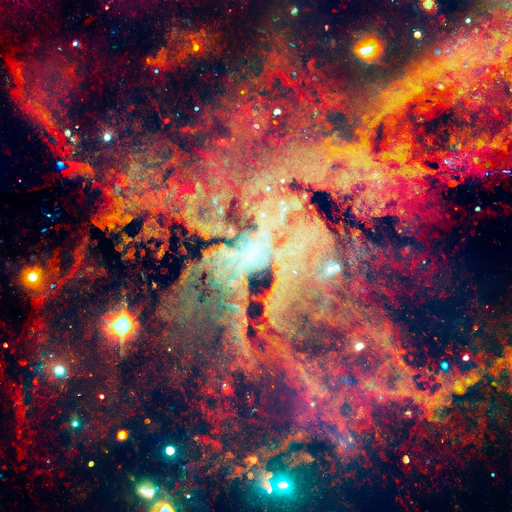In the vast expanse of the cosmos, a remarkable phenomenon unfolds before our eyes. It is an awe-inspiring tale of the universe’s birth, an event that unleashed unimaginable energy and set in motion the cosmic dance we now call the Big Bang. But the story doesn’t end there. Far from it. The aftermath of this colossal explosion continues to reverberate across the universe, shaping the very fabric of space itself. Join us as we embark on a remarkable journey to explore how the Big Bang continues to shape our understanding of the cosmos, revealing secrets and mysteries that have captivated scientists for centuries.

What is the Big Bang Theory?
The Big Bang Theory is the prevailing scientific explanation for the origin and evolution of the universe. According to this theory, the universe began approximately 13.8 billion years ago as a singularity, a point of infinite density and temperature. From this initial state, the universe rapidly expanded and continues to do so to this day. The Big Bang Theory provides a framework for understanding the origin of galaxies, stars, and other celestial objects, as well as the fundamental laws of physics that govern the universe.
Overview of the Big Bang Theory
The Big Bang Theory posits that the universe began as a highly compressed and incredibly hot singularity. As this singularity rapidly expanded, it released an enormous amount of energy, giving birth to space, time, and matter. The expansion of the universe is not like an explosion in space but rather an expansion of space itself. This expansion also implies that the universe was much denser and hotter in the past, gradually cooling as it expanded. The Big Bang Theory provides a coherent explanation for a wide range of observations, from the uniform distribution of galaxies to the cosmic microwave background radiation.
Scientific evidence supporting the Big Bang Theory
The Big Bang Theory is supported by a wealth of scientific evidence from various fields of study. One crucial piece of evidence is the observation that galaxies are moving away from each other, indicating an expanding universe. This discovery was made by astronomer Edwin Hubble in the 1920s and is known as the redshift of galaxies. Hubble’s Law, which states that the velocity at which a galaxy is moving away from us is proportional to its distance, provides compelling evidence for the expansion of the universe.
Another line of evidence comes from the detailed study of the cosmic microwave background (CMB) radiation. The CMB is a faint glow of radiation that permeates the entire universe and is a remnant of the early stages of the universe, when it transitioned from being opaque to transparent. The precise measurements of the CMB reveal subtle temperature fluctuations that correspond to variations in the density of matter in the early universe. These fluctuations are in excellent agreement with the predictions of the Big Bang Theory and provide further support for its validity.
The Expansion of the Universe
Discovery of the expanding universe
The discovery of the expanding universe is one of the foundational pillars of the Big Bang Theory. In the 1920s, Edwin Hubble, using the Mount Wilson Observatory in California, observed that distant galaxies were moving away from us. He noticed that the light from these galaxies appeared to be shifted towards the red end of the electromagnetic spectrum, known as redshift. This redshift indicated that the galaxies were moving away from us and that the universe was expanding.
Hubble’s Law: A key discovery
Hubble’s Law, formulated by Edwin Hubble, is a key discovery that provides direct evidence for the expansion of the universe. This law states that the velocity at which a galaxy is receding from us is directly proportional to its distance. This relationship suggests that space itself is stretching, causing galaxies to move away from each other. Hubble’s Law has been verified by numerous observations and is a fundamental pillar of modern cosmology.
Measuring the rate of expansion
Measuring the rate at which the universe is expanding, known as the Hubble constant, is a crucial endeavor in cosmology. Over the years, multiple observational techniques have been employed to determine this value. One method involves measuring the distances to objects with known brightness, such as certain types of supernovae, to determine their intrinsic brightness. By comparing their intrinsic brightness to their observed brightness, scientists can calculate their distance and, consequently, the rate of expansion. Another approach uses the cosmic microwave background radiation to constrain the Hubble constant. Ongoing research continues to refine our understanding of the rate of expansion of the universe, shedding light on the fundamental properties of our cosmos.
The Fabric of Space
Understanding space-time
Space and time are not separate entities but are intertwined in a concept known as space-time. In the framework of general relativity, developed by Albert Einstein, the fabric of space-time is not static but can be influenced by mass and energy. This understanding of space-time allows for a deeper comprehension of the dynamics of the universe and how gravity shapes its structure.
The role of gravity in shaping space
Gravity, as described by Einstein’s theory of general relativity, plays a fundamental role in shaping the fabric of space. Massive objects, such as stars, galaxies, and even clusters of galaxies, create distortions in space-time. These distortions cause the paths of other objects, such as planets or light, to curve as they pass through the vicinity of massive objects. This phenomenon, known as gravitational lensing, provides direct evidence for the interaction between gravity and the fabric of space.
Quantum fluctuations and their impact on space
At the smallest scales of the fabric of space, the principles of quantum mechanics come into play. Quantum fluctuations, which arise due to the inherent uncertainty in measurement, can briefly create and annihilate particle-antiparticle pairs even in empty space. These fluctuations have a profound impact on the fabric of space, influencing its structure and behavior. Understanding the interplay between gravity and quantum mechanics is an ongoing area of research that could provide valuable insights into the nature of the universe.
The Early Universe
Inflation: A rapid expansion phase
Inflation is a concept introduced to explain several observations that the standard Big Bang Theory alone could not account for. According to the theory of cosmic inflation, the universe underwent an extremely rapid expansion phase shortly after the Big Bang. This rapid expansion resulted in the universe growing exponentially, and it is believed to have smoothed out irregularities and set the stage for the formation of galaxies and other large-scale structures we observe today.
Formation of cosmic microwave background radiation
One of the most significant pieces of evidence supporting the Big Bang Theory is the existence of the cosmic microwave background radiation (CMB). This radiation is often referred to as the afterglow of the Big Bang. As the universe cooled down after the initial expansion, it transitioned from being opaque to transparent. The CMB is the residual radiation from that transition, and it is observed uniformly in all directions of the sky at a temperature just 2.7 degrees above absolute zero. The discovery and subsequent analysis of the CMB have provided invaluable insights into the early universe and its composition.
Growth of primordial density fluctuations
In the early stages of the universe, tiny fluctuations in the density of matter were present. These primordial density fluctuations ultimately gave rise to the vast cosmic structures we observe today, such as galaxies, galaxy clusters, and superclusters. As the universe expanded and cooled, these fluctuations grew due to the force of gravity, pulling matter together and forming the seeds for the formation of structures. This process, known as gravitational collapse, played a crucial role in the development of the universe’s large-scale structure.

Dark Energy
Introduction to dark energy
Dark energy is a mysterious form of energy that is thought to permeate the entire universe and drive its accelerating expansion. It represents about 68% of the total energy content of the universe, with dark matter accounting for approximately 27%. Despite its dominance, dark energy remains one of the greatest puzzles in modern cosmology, with its true nature and origin still largely unknown.
Explanation for the accelerating expansion
The presence of dark energy is required to explain the recent observations that the expansion of the universe is accelerating, rather than slowing down, as was previously believed. The force of gravity, alone acting on visible matter, cannot account for this accelerating expansion. Dark energy, with its unique properties, exerts a repulsive gravitational effect on the fabric of space, pushing galaxies and other objects farther apart. This repulsive force, often referred to as negative pressure, counteracts the attractive force of gravity and is responsible for the universe’s accelerated expansion.
Detecting and studying dark energy
Detecting and studying dark energy is an ongoing challenge for cosmologists. One approach involves measuring the large-scale distribution of galaxies and the patterns they form to infer the properties of dark energy. Another method involves studying the growth of structures over time and comparing it to theoretical predictions. These and other observational techniques aim to unravel the nature, behavior, and influence of dark energy, shedding light on the fate of our expanding universe.
Cosmic Microwave Background
The afterglow of the Big Bang
The cosmic microwave background (CMB) is a faint cosmic radiation that permeates the entire universe. It is a remnant of the early stages of the universe when it transitioned from being hot and ionized to cool and neutral. This transition, known as recombination, occurred about 380,000 years after the Big Bang. The CMB is often referred to as the afterglow of the Big Bang because it provides valuable information about the early universe and the conditions that existed in the first few moments after its birth.
Detailed analysis of cosmic microwave background
A detailed analysis of the cosmic microwave background has yielded significant insights into the universe’s composition and evolution. Scientists have mapped the tiny temperature fluctuations in the CMB and determined that they correspond to variations in the density of matter in the early universe. These fluctuations serve as the seeds for the formation of galaxies and other cosmic structures. By studying the CMB, scientists have also been able to estimate the age of the universe, its geometry, and the abundance of both ordinary and dark matter.
Extracting information about the early universe
The cosmic microwave background radiation carries a wealth of information about the early stages of the universe. By analyzing the patterns, distributions, and polarization of the CMB, scientists gain insight into the density, temperature, and composition of the universe when it was just a mere 380,000 years old. This information, combined with other observations and theoretical models, has enabled scientists to paint a vivid picture of the early universe and its subsequent evolution over billions of years.

The Role of Matter
Formation of cosmic structures
The formation of cosmic structures, such as galaxies, galaxy clusters, and superclusters, is inextricably linked to the distribution and behavior of matter in the universe. Over billions of years, the tiny primordial density fluctuations present in the early universe grew under the influence of gravity. These fluctuations gradually clumped together to form regions of higher density, attracting more matter through gravitational attraction. Over time, these regions evolved into the vast structures we observe today.
Clustering of matter in the universe
The clustering of matter in the universe is a complex phenomenon influenced by various forces, such as gravity and dark energy. On large scales, matter tends to clump together into cosmic filaments, voids, and superclusters. These cosmic structures are interconnected by vast networks of galaxies, making up the large-scale cosmic web. The clustering of matter provides important insights into the distribution of mass in the universe, the nature of dark matter, and the interplay between matter and dark energy.
Galaxies and galaxy clusters
Galaxies are the building blocks of the universe, containing billions or even trillions of stars, as well as gas, dust, and other celestial objects. They come in various shapes, sizes, and colors, and their formation and evolution are closely tied to the underlying distribution of matter. Galaxies tend to cluster together, forming galaxy groups, clusters, and even larger structures called superclusters. These galaxy clusters are the largest gravitationally bound objects in the universe and provide valuable information about the distribution of matter and the nature of dark matter.
The Fate of the Universe
Expanding universe versus the Big Crunch
The fate of the universe is an intriguing topic that has fascinated scientists and astronomers for years. The prevailing view is that the universe will continue to expand indefinitely, rather than collapsing in on itself in a scenario known as the Big Crunch. Observational evidence, particularly the accelerated expansion driven by dark energy, suggests that the universe’s expansion will persist, potentially leading to a cold and dark future. This concept of an ever-expanding universe has profound implications for the fabric of space, the distribution of matter, and the ultimate destiny of all cosmic structures.
Possible scenarios for the future of the universe
While the prevailing view suggests an eternal expansion, there are several possible scenarios for the future of the universe. One possibility is the concept of the Big Rip, where the accelerating expansion driven by dark energy eventually becomes so powerful that it tears apart all cosmic structures, including atoms themselves. Another scenario involves the concept of the Big Freeze, where the universe continues to expand, eventually reaching a state of maximum entropy, with all matter spread thinly across space and time. These and other alternative scenarios highlight the complex and mysterious nature of the universe’s fate.
Implications for the fabric of space
The fate of the universe has significant implications for the fabric of space itself. As the universe continues to expand, the fabric of space stretches and dilutes, potentially leading to a future where matter is so thinly spread that new stars and galaxies can no longer form. This gradual thinning of matter and energy, known as entropy increase, would result in a universe characterized by darkness and vast emptiness. Understanding the future of the fabric of space and its interaction with matter and dark energy remains an active area of research in cosmology.

Multiverse and Other Theories
The concept of a multiverse
The concept of a multiverse postulates the existence of multiple universes, each with its own set of physical laws, constants, and initial conditions. According to this theory, our universe is just one of many universes in a vast and diverse cosmic landscape. The multiverse hypothesis arises from the observations that the physical constants and conditions necessary for the existence of life are remarkably fine-tuned in our universe. The idea of a multiverse provides a possible explanation for this apparent fine-tuning and broadens our perspective on the cosmic tapestry.
String theory and its implications for the fabric of space
String theory, a branch of theoretical physics, attempts to unify the fundamental forces in the universe by positing that particles are not point-like but are instead tiny, vibrating strings of energy. This theory has profound implications for the fabric of space and the fundamental nature of reality. In string theory, the fabric of space consists of additional dimensions beyond the familiar three spatial dimensions and one time dimension. These extra dimensions are tightly curled up and play a role in shaping the behavior of matter and energy in the universe.
Alternative cosmological theories
While the Big Bang Theory is currently the leading explanation for the origin and evolution of the universe, alternative theories have emerged and continue to be developed. Some of these theories propose modifications or extensions to the Big Bang Theory, such as the idea of an oscillating universe that undergoes cycles of expansion and contraction. Others consider more radical concepts, such as the idea that our universe is a result of a collision between two higher-dimensional objects. These alternative theories challenge our understanding of the universe and emphasize the dynamic and evolving nature of scientific inquiry.
Observational and Experimental Advances
Modern telescopes and their contributions
Advancements in telescope technology have revolutionized our understanding of the universe and played a crucial role in confirming and expanding upon the predictions of the Big Bang Theory. Modern telescopes, such as the Hubble Space Telescope, the Atacama Large Millimeter Array (ALMA), and the upcoming James Webb Space Telescope, provide unprecedented views of distant galaxies, enabling scientists to study the early universe and probe the mysteries of dark energy and dark matter. These telescopes capture breathtaking images and collect valuable data that drive our knowledge of the cosmos to new frontiers.
Cosmic microwave background experiments
Experiments focused on studying the cosmic microwave background (CMB) have yielded remarkable insights into the early universe and its composition. High-precision instruments, such as the Planck satellite, have mapped the CMB with unprecedented detail, revealing subtle temperature fluctuations that correspond to variations in the density of matter in the early universe. These experiments provide valuable constraints on the fundamental parameters of the universe, such as its age, geometry, and composition, and allow scientists to better understand the processes that shaped the cosmos.
Future missions and prospects
The future of observational and experimental cosmology is brimming with exciting possibilities. New missions, such as the James Webb Space Telescope, promise to revolutionize our understanding of the early universe, allowing us to peer further back in time than ever before. Ground-based observatories and telescopes continue to be upgraded, enabling the study of distant galaxies and the search for exoplanets. Furthermore, advances in theoretical frameworks and computational simulations will help refine our understanding of the universe, allowing us to unravel its most enigmatic secrets. As we embark on this cosmic journey, the fabric of space continues to reveal its intricate tapestry, shaped by the ongoing effects of the Big Bang.
